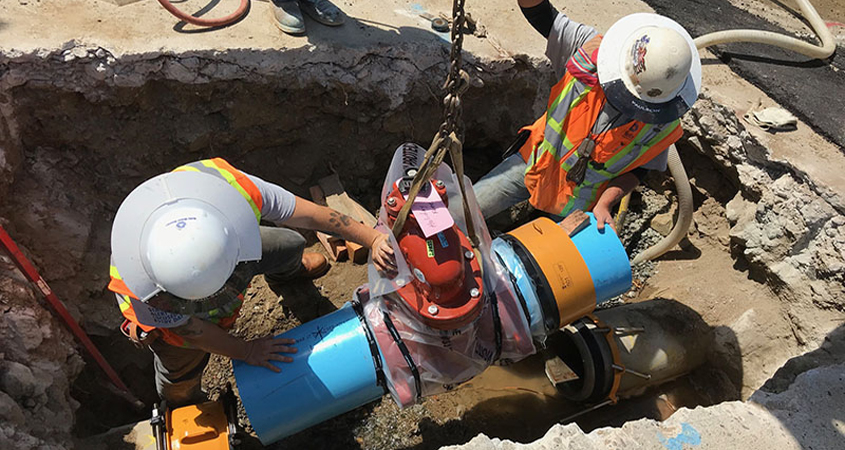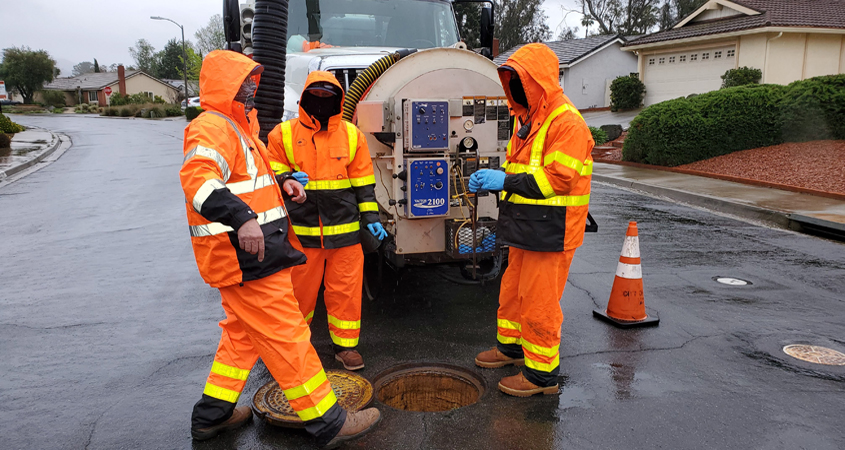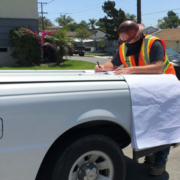Every time you fill up a water bottle or give the kids a bath, it’s due to the people working as essential employees behind the operation of water and wastewater systems within the San Diego County region’s public works infrastructure.
National Public Works Week takes place the third week of May annually in recognition of the public works professionals who provide and maintain vital public works infrastructure for the key contribution they make every day.
Water industry professionals are committed to serving San Diego County year-round by ensuring the seamless delivery of a safe and reliable water supply. During the coronavirus pandemic, dedicated essential employees have demonstrated exceptional dedication and creativity, making 2020 National Public Works Week especially significant.
Essential workers keep the water flowing

Helix Water District crews remain on the job during the coronavirus pandemic as essential employees being honored during National Public Works Week. Photo: Helix Water District
“Our employees are essential workers and they don’t take that lightly,” said Eric Heidemann, City of Poway director of public works. “From our water treatment plant operators to our technicians out in the field, they care for our Poway community and are committed to keeping our water supply safe during this crisis.”
Most of the infrastructure responsible for delivering the water the public depends on every day is hidden. This can make it easy to take a safe and reliable water supply for granted.

Bernardo Separa of the Otay Water District represents thousands of essential employees in public works being recognized during National Public Works Week. Photo: Otay Water District
“It is very rewarding to complete projects as a team,” said Bernardo Separa, engineering design technician with the Otay Water District. “Knowing that you contributed and made a difference as a team member is a tremendous feeling.”
Safe, reliable water supply
“Our dedicated Helix employees help keep East County communities running by providing a safe and reliable water supply, 24/7,” said Carlos Lugo, General Manager, Helix Water District. “During National Public Works Week, we want to say thank you to our Helix employees for keeping the water flowing.”
Career opportunities available in water and wastewater industry

(L to R): Terry Zaragoza, Chad Weigel and Vernon Fitzpatrick from the City of Poway perform routine maintenance on a wastewater pipeline as essential employees. Photo: City of Poway
Public agencies like the San Diego County Water Authority and its 24 member agencies play an important role in the region, both in terms of employment and providing critical services to support 3.3 million residents.
With approximately 1,400 water and wastewater jobs expected to open up across San Diego County in the next five years due to the “silver tsunami” wave of Baby Boomers reaching retirement age, career opportunities have never been more promising.
The Water Authority and its member agencies have created a regional workforce development task force to address the “Silver Tsunami” of retirees. The task force reported that there are approximately 4,500 water and wastewater positions in the San Diego region.





 Sweetwater Authority Logo 2019
Sweetwater Authority Logo 2019
